Andrew Martin and The Basics of Winning Chess Middlegame Tips 2. Play with a plan & square control
It has been a while since i posted anything new of my experiences with the Andrew Martin's Basics of Winning Chess DVD, but i've been watching the first video of the second chapter on middlegame tips entitled; "Play with a plan & square control". Andrew Martin starts off by telling you that you should always play with a plan. A plan in his words, is simply stated some idea of where you're going, and what you're going to do next. The clash of plans over the board (or on screen for that matter) is one of the most interesting aspects of the game of chess. So he says :-) Ideally, plans should be flexible and adaptable. So start simply, with short range ideas. As you gain experience you'll automaticly deepen your planning skills. There's no actual substitute for playing chess to develop this ability. No amount of study is going to teach you like your own games. Therefore A. Martin's advice for developing planning skills is to play more. And that concludes "play with a plan". To continue with "square control" and putting your pieces on good squares. A.Martin starts off with the question what exactly a good square is, and tells you that many great players seem to find good squares for their pieces with ease. They put a piece down and it just seems perfectly posted. So why is that skill not available to all of us (A. Martin asks)? Have you heard of the "square control theory" (to tell you the truth, i didn't)? It may be a bit of a mechanical rather robotic method, but it will help you determine what is a good square for a piece and what is not. After which A. Martin shows you the following commented examples.
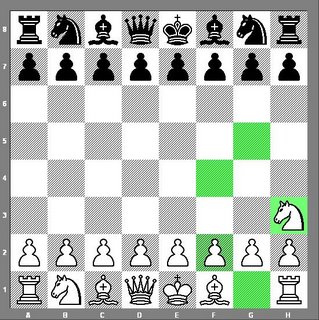
If you are tho choose wether to start a game with 1.Nf3 or 1.Nh3, which would be the better move? Well, sheer number crunching would determine that 1.Nf3 would be the better move. In the first example the highlighted squares shows you the number of squares the Knight controls from h3, which is four. But looking at the Knight on f3
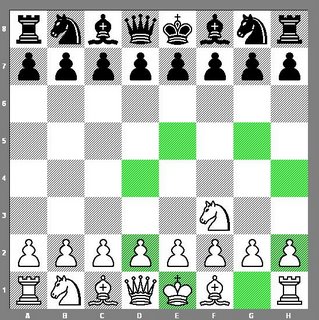
we can see the Knight controls actually eight squares. So by putting a piece in the center at the start of the game, you actually doubled the effectiveness of that piece! Maybe a very usefull idea for you to think about. One more example of that plan;
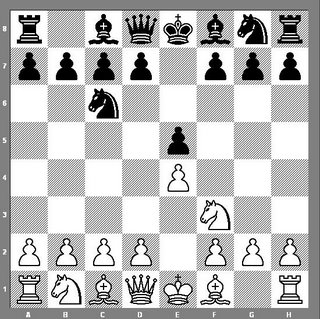
Let's say the opening is as followed; 1.e4 e5 2.Nf3 Nc6 after which White must determine a good square for his light squared Bishop (that is if you want to play out your Bishop on the third move). You could put the Bishop on e2.
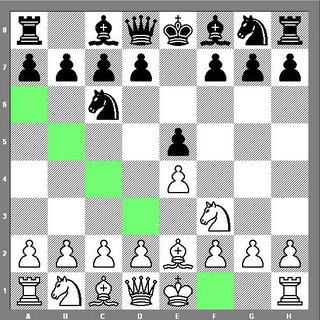
There the Bishop controls five squares. If you put the Bishop on d3,
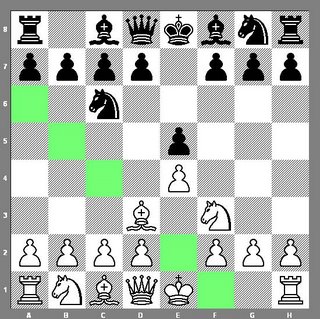
the Bishop controls the same five squares. But if you put the Bishop on c4,
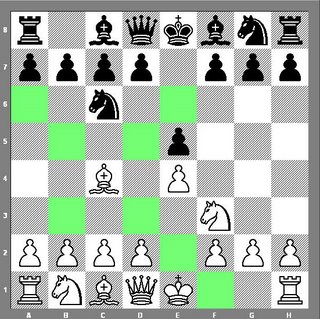
how many squares does the Bishop control then? The same five squares plus three. Which makes eight! Significantly increasing the range and effectiveness of that piece. And if you put the Bishop on b5,
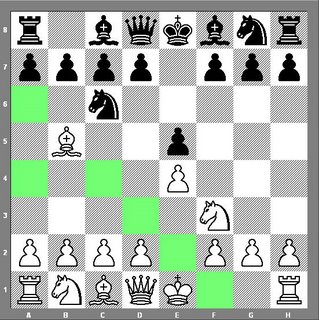
we see that the Bishop controls six or seven squares if you count the attack on the Knight. So that is why Bishop to c4 or b5 are the most popular choices in this position. Simply because the piece is placed most effectively. So if you want to pick up a piece and place it most effectively, count the number of squares it controls. It's a very usefull way of looking at the game. A. Martin concludes with a final usefull piece of advice; If you really can't think of what to do in a game of chess (taking into account there are certain positions which baffle us all), just keep it simple, improve the position of your worst placed piece. Pick up a piece which you percieve to be on the worst square and improve the effectiveness of that piece. Usually this involves some centralization. Now, all these ideas may seem very basic, but the point is; They really do work. Therefore A. Martin urges you to think about them closely in your own games.
Well, that concludes the first video (chapter is divided into two) of "playing with a plan and square control". Personally, i found it to be very usefull. Even though it is very basic. Anyway, if you enjoyed the post (hope i didn't overdo the tilted text parts), do not hesitate to let me know. Because i also create these posts hoping they will be of use to others wanting to learn a thing or two about the game of chess.
Untill next time ;-)






5 Comments:
thanks for the good advice. sounds like a good video.
Interesting article. I will try to keep it in mind, particularly for those situations when I am not sure where to place a piece during development.
It is a good video! But it's not like your normal DVD. You need a ChessBase program to view it. But you were probably aware of that.
i was not aware of that! (CB progs are not standalone)
guess that means i won't ever be purchasing anything from those guys, even though i like their website. which is free, heheh.
I need to correct myself where my last comment is concerned. Though it is true that you need a ChessBase program to view it, i forgot to tell that there is a ChessBase program included with these DVD's. It is not one of their chessplaying programs though, or even one of their full functional database programs (but that would be askin for too much ofcourse). It is a program that enables you to view the video's, and it's called ChessBase Reader. It is a special version of ChessBase 7 with limited functionality. So, do not hesitate on my account to purchase one of their training DVD's (if they got one of your liking)... Look here for a selection.
Post a Comment
Subscribe to Post Comments [Atom]
<< Home